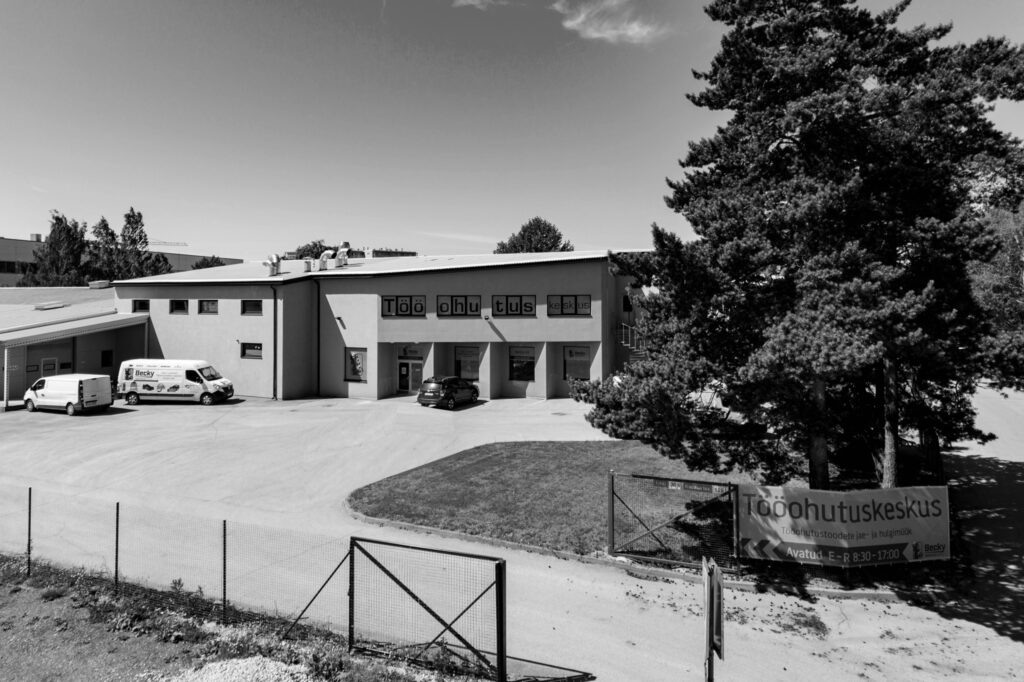THE CHOICE OF RESPIRATOR MUST TAKE INTO ACCOUNT THE WORKING ENVIRONMENT AND ITS REQUIREMENTS
It’s all about right equipment and behaviour when it comes to work safety. The choice of respirator is as important as the choice of workwear and personal protective equipment.
What happens if respiratory protection is not used? Dangerous microbes, fungal spores and organic dusts, as well as the most common silica dust, enter the respiratory tract. Exposure to the latter can lead to the so-called occupational disease silicosis, or pulmonary tuberculosis, in workers in unhealthy working environments.
Choosing a respirator is very important, first of all to find out its protection class and protection factor. For more dangerous work, use reusable respirators, semi- or full-face respirators or even compressed air respirators.
When wearing a respirator, make sure that it is always close to your face. This prevents air leakage and toxic fumes or particles from entering the mask. Comfort is no less important: it must be easy to breathe, the internal air must be cool and it must be comfortable to wear.
NOTE: To find the best respirator for your needs, we recommend that you try different masks, as individual physical characteristics can play an important role in the choice.
DISPOSABLE RESPIRATORS
Designed for use in the construction, scientific, environmental and beauty industries. Choose the correct protection class according to the application (P1, P2 or P3 for dust masks), we have also highlighted some examples below:
Cutting, grinding, drilling. The protection class is generally P1, but depending on the quartz content of the material, a P2 or P3 respirator may be required if the material contains chromates.
Welding – P2.
Working with asbestos – P2, if there is low exposure or P3.
Sorting waste – P2
Spraying: spray painting or pesticides spraying – P2
Equipment maintenance, for example oil change etc – P3
Allergies – usually P1, but sometimes P2 may be needed.
Mold, fungi and bacteria – P2, but in case of tuberculosis use P3.
When choosing a respirator, its protection factor must also be taken into account. The nominal protection factor is the theoretical protection class for respiratory protection obtained from laboratory measurements in accordance with European standards. For example: NPF 4, NPF 12 and NPF 50, where a higher number corresponds to more demanding working conditions. The amount of fine dust residue during the work and the amount of water- and oil-based mists generated during grinding, drilling or cutting, play a role in this.
| FFP1 respirators | FFP2 respirators | FFP3 respirators | |
| Nominal Protection Factor | NPF 4 | NPF 12 | NPF 50 |
| Examples of Application | Small amounts of fine dust (up to 4 x LPN) and oil or water-based fog. Handling of stone, rubble, concrete drilling. | Average amounts of fine dust (up to 12 x LPN) and oil or water-based fog. Grinding, sanding, cementation, wood dust. | Large amounts of fine dust (up to 50 x LPN) and oil or water-based fog. When handling hazardous powders in the pharmaceutical industry or working with biological substances and fibres. |
Nominal Protection Factor (NPF): The theoretical protection class of a respirator based on data from laboratory measurements. LPN: Permissible limit value
4 tips to ensure you get the most out of your mask:
1. The face must be clean, as any obstruction (e.g. beard) will reduce the mask’s protective ability.
2. Long hair must be tied up to prevent the mask from moving out of place.
3. Always squeeze the nose clip with the fingers of both hands to ensure maximum protection.
4. Test before use: inhale and exhale and check for air leakage. If necessary, the respirator can be adjusted by using a lanyard or a nose clip.
REUSABLE RESPIRATORS
Reusable masks have the advantage of durability, quality and longevity, and a well-fitting, non-distracting respirator will improve your performance. The advantage is also that you can combine and use both vapour and gas filters and dust filters at the same time. The 3M half and full face masks offer effective protection against dust particles as well as gas and vapours thanks to the different filters.
- 4000 series half masks with non-interchangeable filters;
- 6000 series half and full face masks;
- 7000 series half masks.
The above-mentioned series differ in particular in their ease of use and maintenance. For example, whether the filters can be changed, whether spare parts are available, whether it can be left on the users neck when not in use, etc.
Select a filter from 3M colour scale:
- White – protects against dust particles.
- Brown – protects from organic vapours.
- Grey – protects against inorganic vapours.
- Yellow – protects against acid gases.
- Green – protects against ammonia and its derivatives.
If you have further questions, please contact us!
NOTE! This article is only an overview. It should not be used as the sole document for the selection of respiratory protective equipment.










Follow us on social media:
Join our mailing list! Sign up to receive email updates on new products, special offers and more.